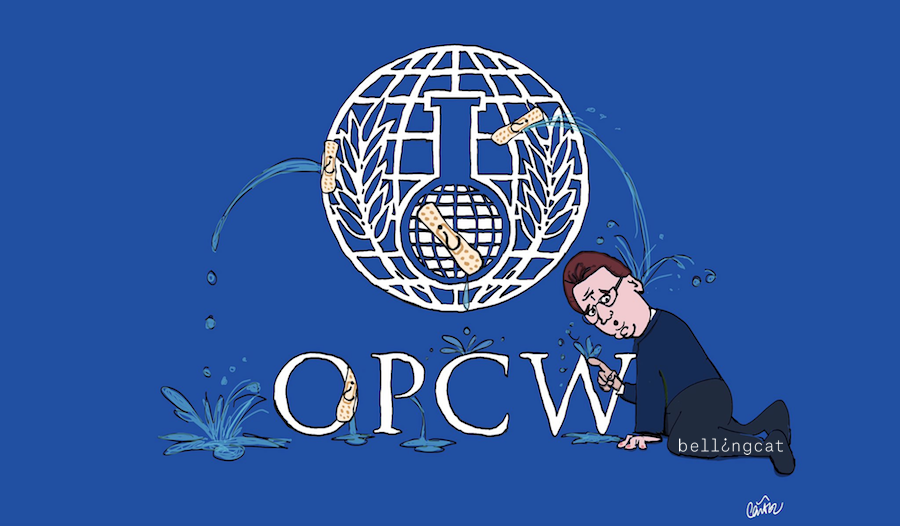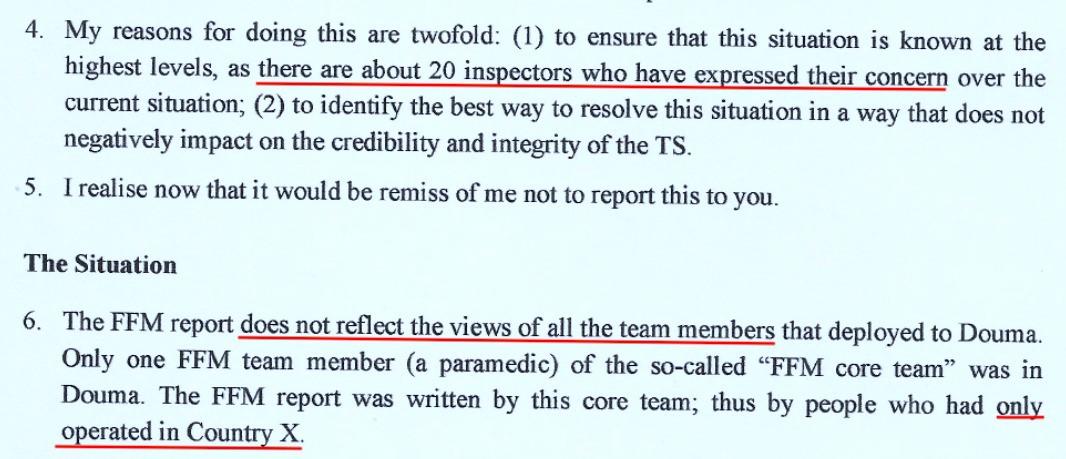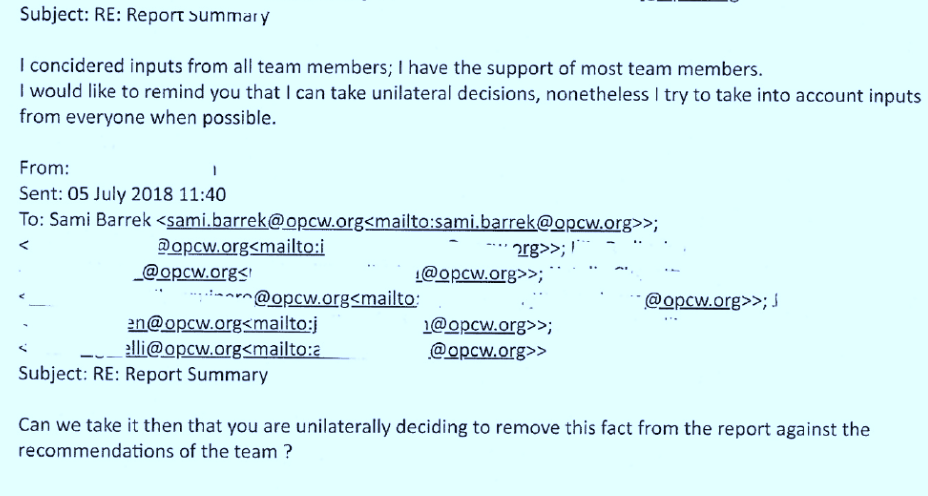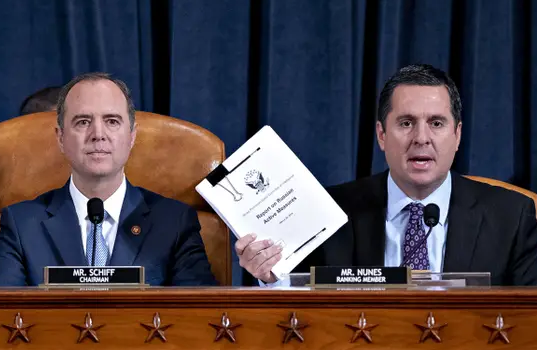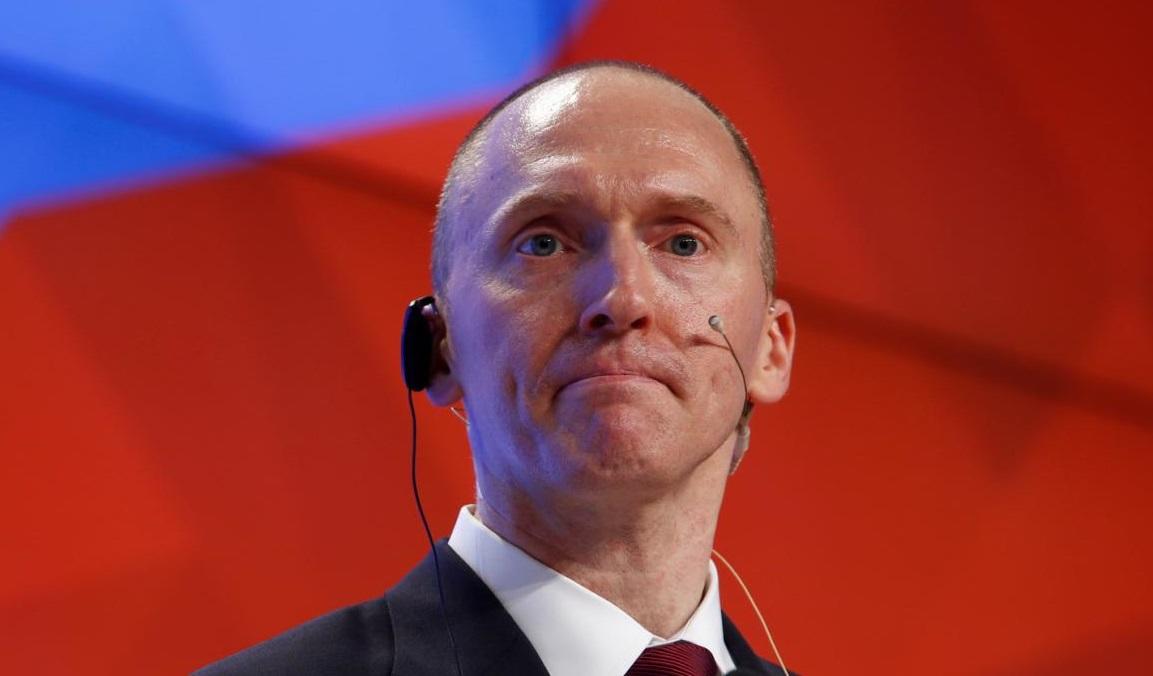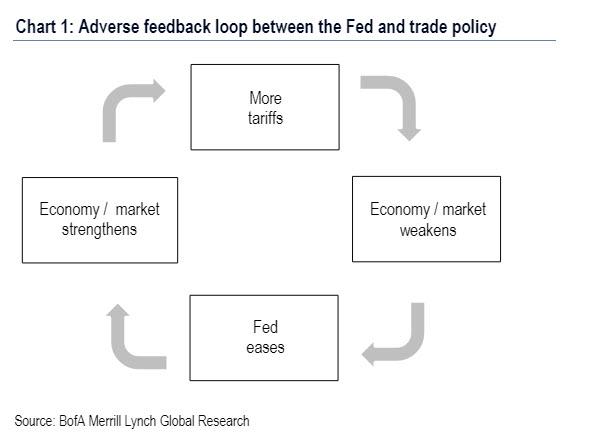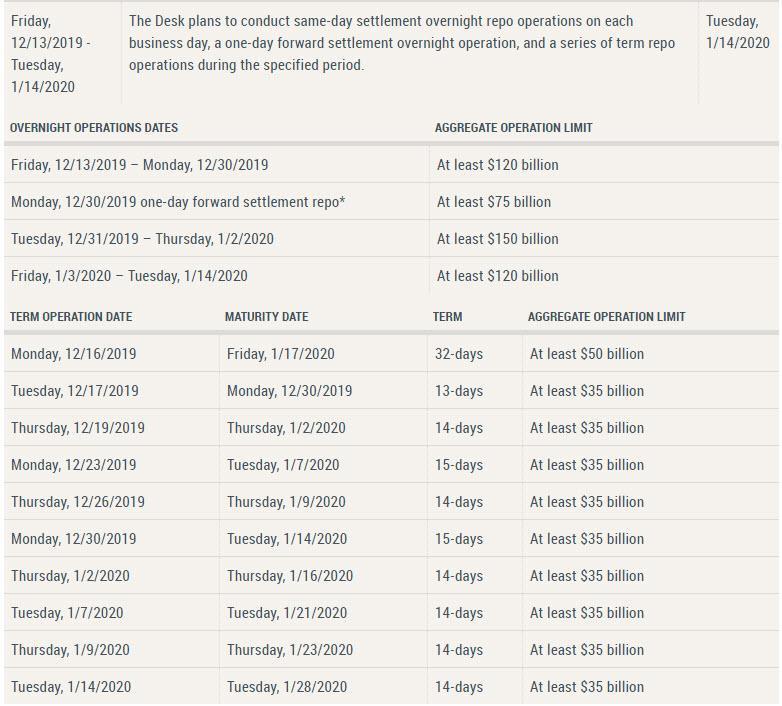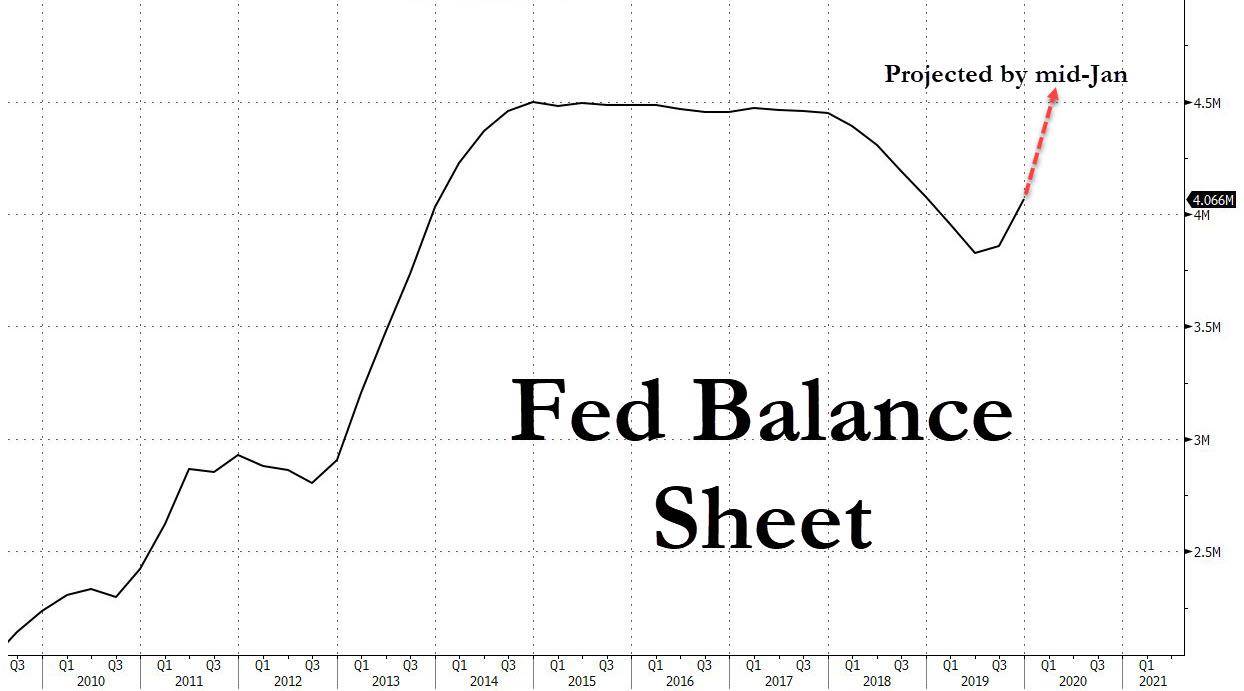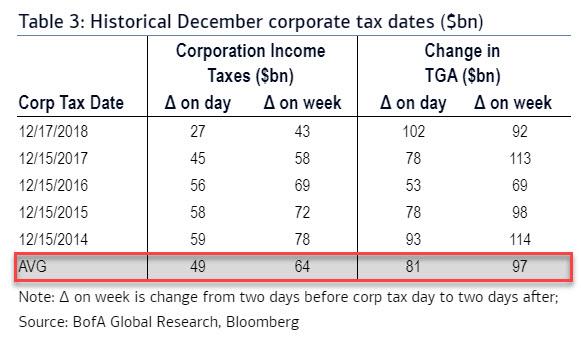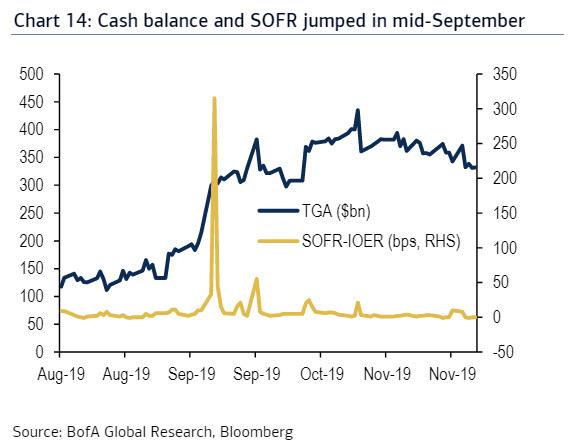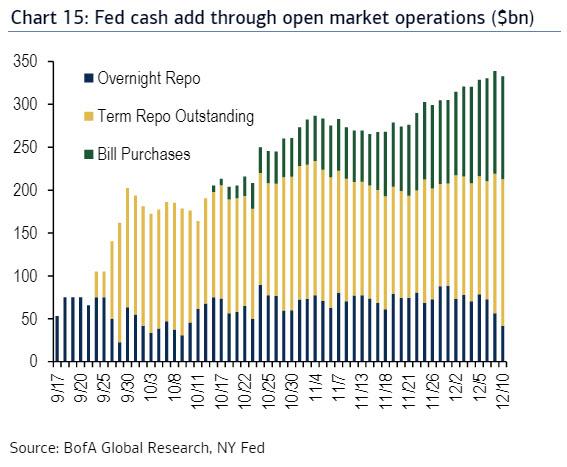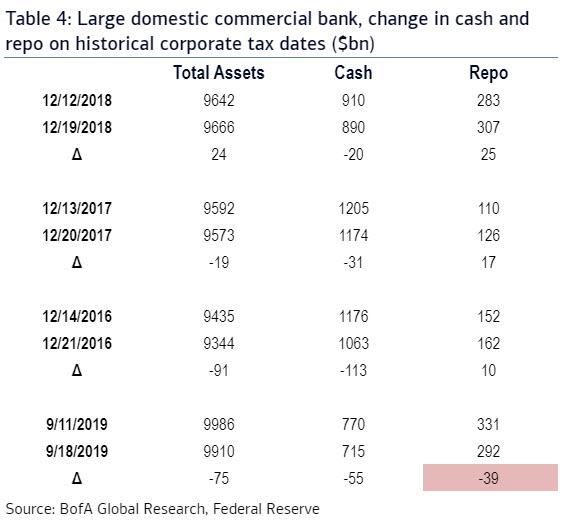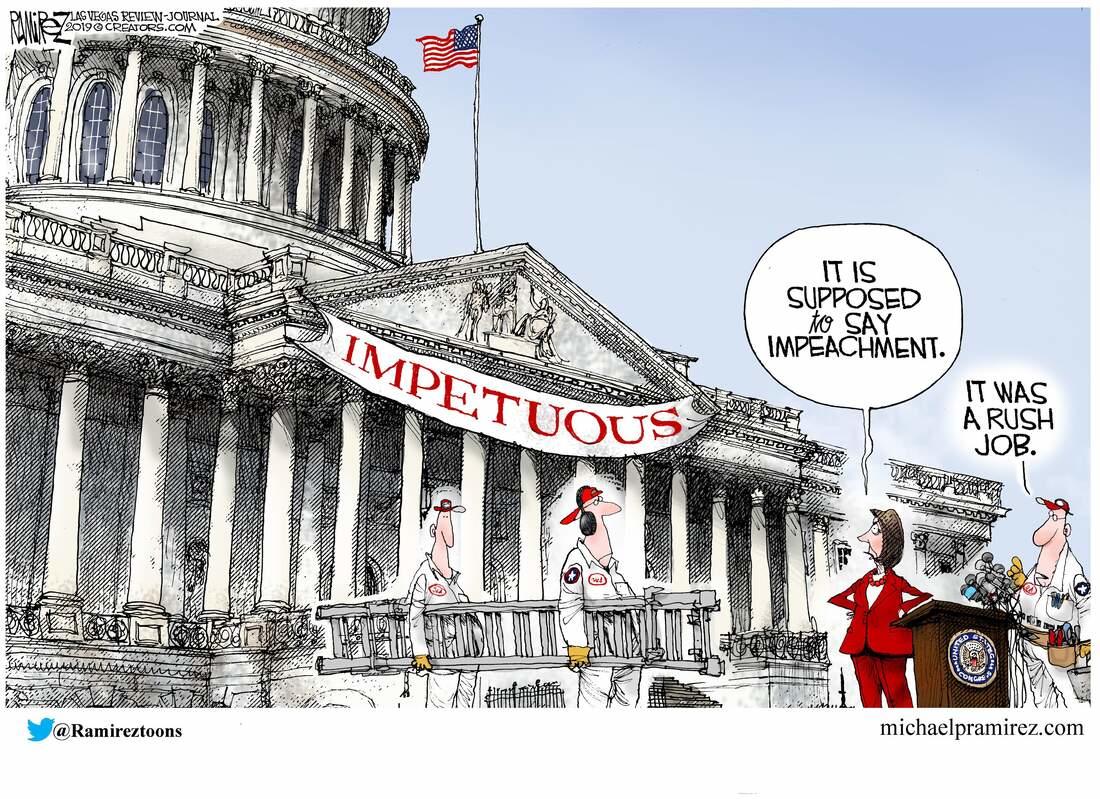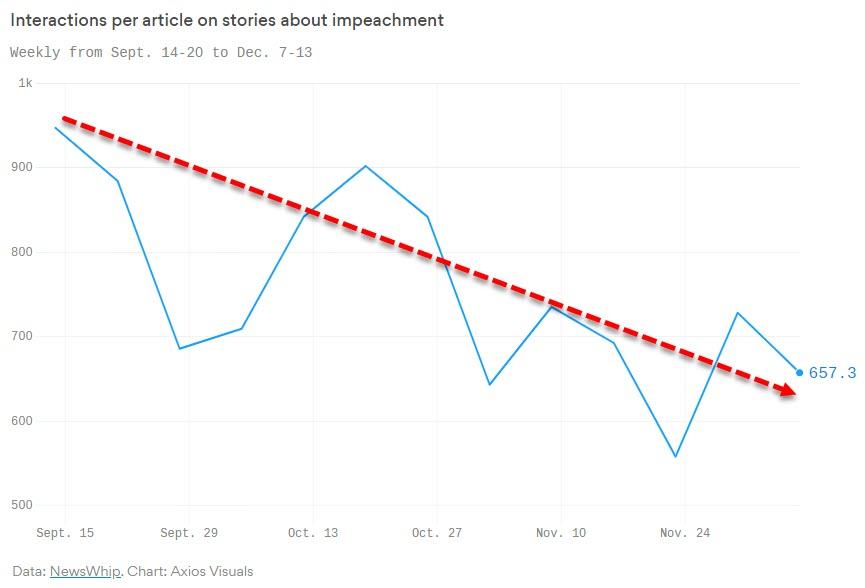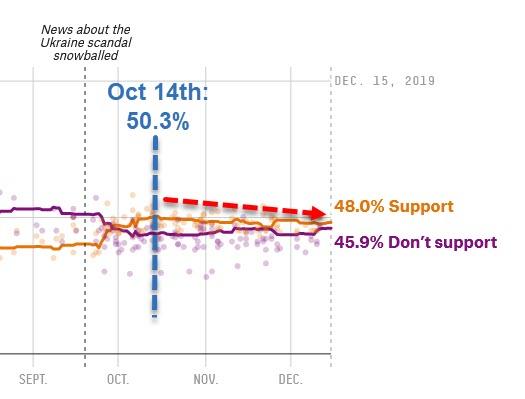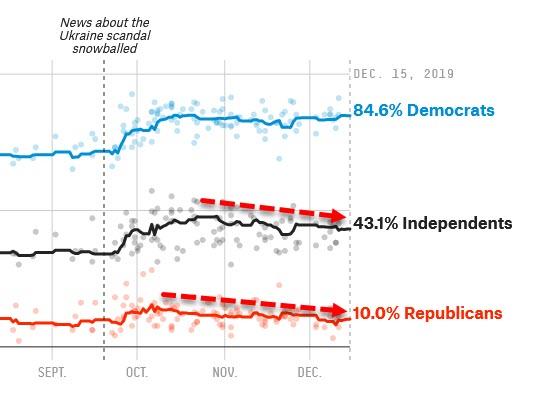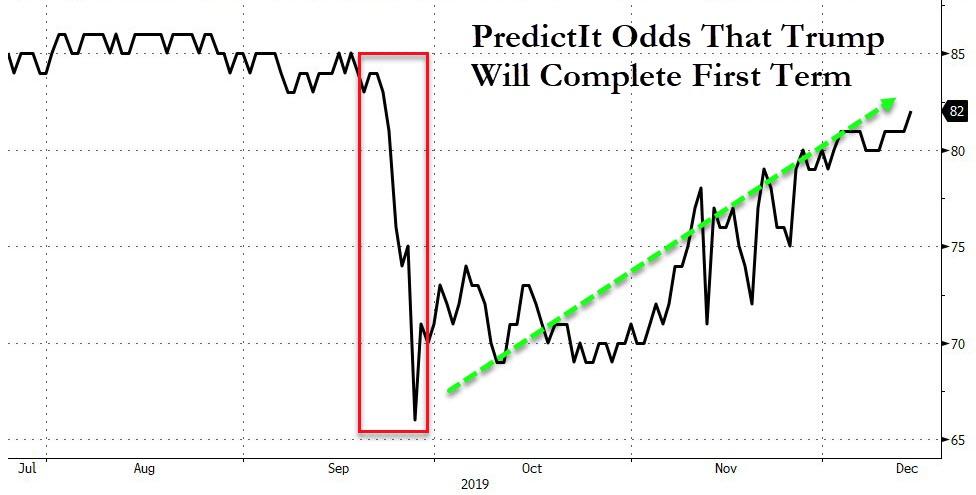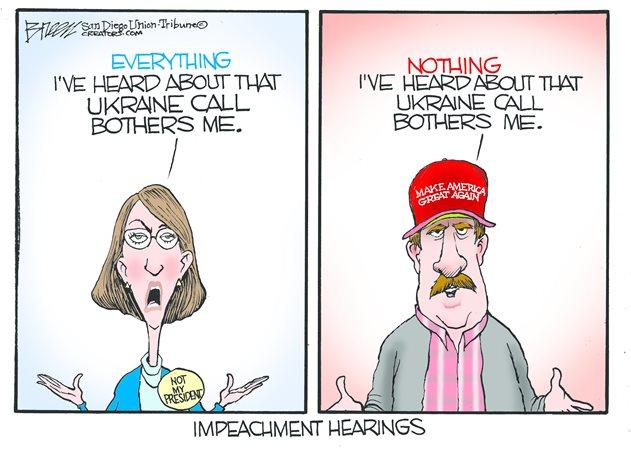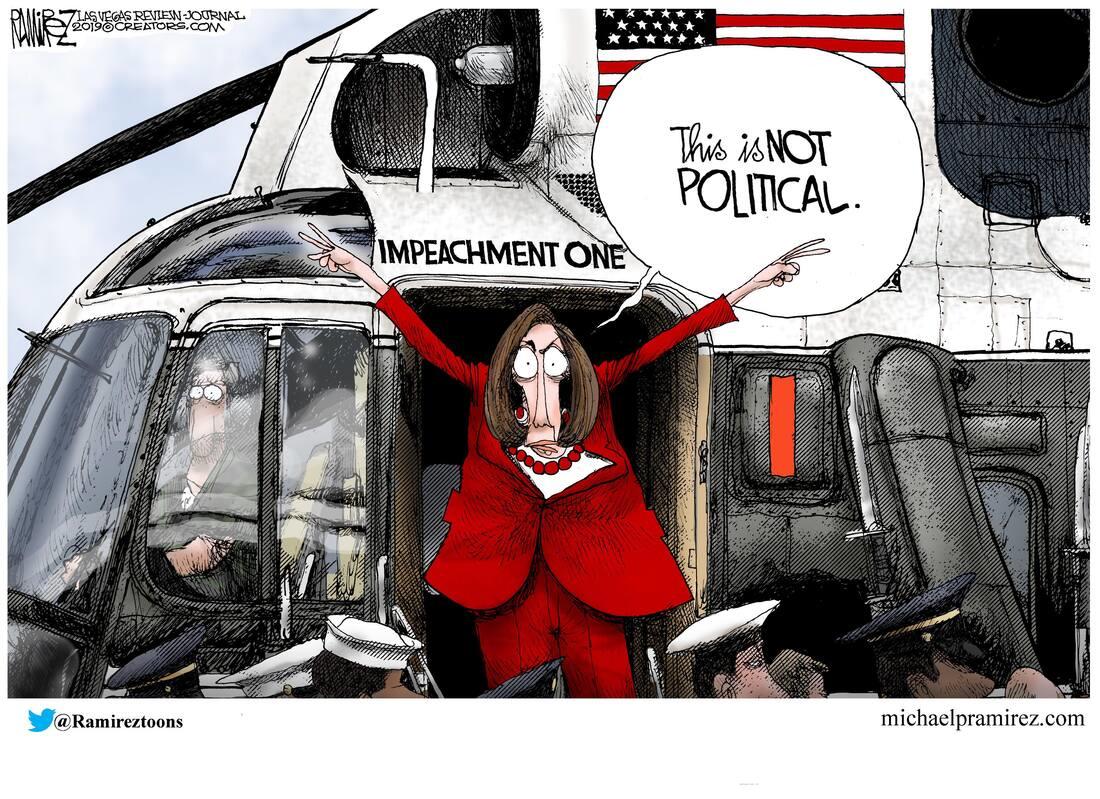Deluge Of New Leaks Further Shreds The Establishment Syria Narrative
Authored by Caitlin Johnstone via Medium.com,
It’s been a bad last 24 hours for the war propagandists.
WikiLeaks has published multiple documents providing further details on the coverup within the Organisation for the Prohibition of Chemical Weapons (OPCW) of its own investigators’ findings which contradicted the official story we were all given about an alleged chlorine gas attack in Douma, Syria last year. The alleged chemical weapons incident was blamed on the Syrian government by the US and its allies, who launched airstrikes against Syria several days later. Subsequent evidence indicating that there was insufficient reason to conclude the chlorine gas attack ever happened was repressed by the OPCW, reportedly at the urging of US government officials.
The new publications by WikiLeaks add new detail to this still-unfolding scandal, providing more evidence to further invalidate attempts by establishment Syria narrative managers to spin it all as an empty conspiracy theory. The OPCW has no business hiding any information from the public which casts doubt on the official narrative about an incident which was used to justify an act of war on a sovereign nation.
RELEASE: Third batch of documents showing doctoring of facts in released version of OPCW chemical weapons report on Syria. Including a memo stating 20 inspectors feel released version “did not reflect the views of the team members that deployed to [Syria]”https://t.co/ndK4sRikNk
— WikiLeaks (@wikileaks) December 15, 2019
The following are hyperlinks to the individual OPCW documents WikiLeaks published, with some highlights found therein:
A first draft of the OPCW’s July 2018 Interim Report on the team’s findings in Douma.
Contains crucial information that was not included in either the final draft of the July 2018 Interim Report or the March 2019 Final Report, including (emphasis mine):
1. The symptoms of the alleged victims of the supposed chemical incident were inconsistent with chlorine gas poisoning.
“Some of the signs and symptoms described by witnesses and noted in photos and video recordings taken by witnesses, of the alleged victims are not consistent with exposure to chlorine-containing choking or blood agents such as chlorine gas, phosgene or cyanogen chloride,” we learn in the unredacted first draft. “Specifically, the rapid onset of heavy buccal and nasal frothing in many victims, as well as the colour of the secretions, is not indicative of intoxication from such chemicals.”
“The large number of decedents in the one location (allegedly 40 to 45), most of whom were seen in videos and photos strewn on the floor of the apartments away from open windows, and within a few meters of an escape to un-poisoned or less toxic air, is at odds with intoxication by chlorine-based choking or blood agents, even at high concentrations,” the unredacted draft says.
This important information was omitted from the Interim Report and completely contradicted by the Final Report, which said that the investigation had found “reasonable grounds that the use of a toxic chemical as a weapon took place. This toxic chemical contained reactive chlorine. The toxic chemical was likely molecular chlorine.”
2. OPCW inspectors couldn’t find any explanation for why the gas cylinders supposedly dropped from Syrian aircraft were so undamaged by the fall.
“The FFM [Fact-Finding Mission] team is unable to provide satisfactory explanations for the relatively moderate damage to the cylinders allegedly dropped from an unknown height, compared to the destruction caused to the rebar-reinforced concrete roofs,” reads the leaked first draft. “In the case of Location 4, how the cylinder ended up on the bed, given the point at which it allegedly penetrated the room, remains unclear. The team considers that further studies by specialists in metallurgy and structural engineering or mechanics are required to provide an authoritative assessment of the team’s observations.”
We now know that a specialist was subsequently recruited to find an answer to this mystery. A leaked document dated February 2019 and published by the Working Group On Syria, Propaganda and Media in May 2019 was signed by a longtime OPCW inspector named Ian Henderson. Henderson, a South African ballistics expert, ran some experiments and determined that “The dimensions, characteristics and appearance of the cylinders, and the surrounding scene of the incidents, were inconsistent with what would have been expected in the case of either cylinder being delivered from an aircraft,” writing instead that the cylinders being “manually placed” (i.e. staged) in the locations where investigators found them is “the only plausible explanation for observations at the scene.”
More on Ian Henderson in a moment.
3. The team concluded that either the victims were poisoned with some unknown gas which wasn’t chlorine, or there was no chemical weapon at all.
“The inconsistency between the presence of a putative chlorine-containing toxic chocking or blood agent on the one hand and the testimonies of alleged witnesses and symptoms observed from video footage and photographs, on the other, cannot be rationalised,” the unredacted first draft reads. “The team considered two possible explanations for the incongruity:
a. The victims were exposed to another highly toxic chemical agent that gave rise to the symptoms observed and has so far gone undetected.
b. The fatalities resulted from a non-chemical-related incident.”Again, none of this information made it into any of the OPCW’s public reports on the Douma incident. The difference between the information we were given (that a chlorine gas attack took place and the strong suggestion that it was dropped by Syrian aircraft) and the report the inspectors were initially trying to put together (literally the exact opposite) is staggering. For more insider information on the deliberation between OPCW inspectors who wanted their actual findings to be reported and the organisation officials who conspired to omit those findings, read this November report by journalist Jonathan Steele.
It’s worth noting that this memo is dated two weeks after the OPCW published its Final Report on the Douma incident in March 2019, because it further invalidates the bogus argument made by narrative management firms like Bellingcat claiming that the grievances of the dissenting OPCW inspectors had been satisfactorily addressed by the time the Final Report was published.
Clearly the concerns were not addressed, because the memo consists entirely of complaints, and according to its author “there are about 20 inspectors who have expressed their concern over the current situation.”
The memo’s author complains that the FFM report was made almost exclusively by team members who never even went to Douma, doing their research instead solely in “Country X”, which WikiLeaks speculates may be Turkey.
“The FFM report does not reflect the views of all the teams that deployed to Douma,” the memo says. “Only one team member (a paramedic) of the so-called ‘FFM core team’ was in Douma. The FFM report was written by this core team, thus by people who had only operated in Country X.”
“After the exclusion of all team members other than a small cadre of members who had deployed (and deployed again in October 2018) to Country X, the conclusion seems to have turned completely in the opposite direction. The FFM team members find this confusing, and are concerned to know how this occurred.”
The memo’s author is unnamed in the WikiLeaks document, but claims to have been “assigned the task of analysis and assessment of the ballistics of the two cylinders,” indicating that it was likely the aforementioned Ian Henderson. A concurrent publication by Peter Hitchens in the Daily Mail appears to confirm this. Hitchens reports that when Henderson lodged his Engineering Assessment in the OPCW’s secure registry after failing to get traction for his report, which the memo’s author also reports to have done, an unpopular unnamed OPCW official nicknamed “Voldemort” ordered that every trace of the report be removed.
“Mr Henderson tried to get his research included in the final report, but when it became clear it would be excluded, he lodged a copy in a secure registry, known as the Documents Registry Archive (DRA),” Hitchens reported. “This is normal practice for such confidential material, but when ‘Voldemort’ heard about it, he sent an email to subordinates saying: ‘Please get this document out of DRA … And please remove all traces, if any, of its delivery/storage/whatever in DRA’.”
So to recap, the OPCW enlisted a longtime ballistics expert with an extensive history of work with the organisation to run some experiments and produce an Engineering Assessment to explain how the alleged chlorine cylinders could have been found in the condition they were found in, and when he came to conclusions which were exculpatory for the Syrian government, his boss ordered every sign of it purged from the registry.
Again, not a whisper of any of this was breathed in the OPCW’s public reports on the Douma incident, despite somewhere around 20 inspectors having objections. The OPCW had no business hiding this from the public.
An internal email from May 2019 voicing further concerns.
The usual regime change fanatics helped provoke more OPCW leaks by flagrantly lying about a whistleblower. Read the whole thread here. https://t.co/fyrfBnoxM2
— Max Blumenthal (@MaxBlumenthal) December 15, 2019
This interesting email, sent to the OPCW’s Office of Strategy and Planning Director Veronika Stromsikova, defended Ian Henderson and objected to the mistreatment of a principled and respected team member.
“A member of the FFM team has been suspended from his post and escorted from the OPCW building in a less than dignified manner,” the email’s author complains. “After more than 12 years, I believe, serving the OPCW with dedication and professionalism, Ian Henderson’s personal and professional integrity have taken a knock in the most public of fora, the internet. A falsehood issued by the OPCW, that Ian did not take part in the Douma FFM team, has been pivotal in discrediting him and his work.”
Indeed, as soon as Henderson’s Engineering Assessment was leaked this past May, Syria narrative managers like Idrees Ahmad, Brian Whitaker, and Bellingcat founder Eliot Higgins immediately set to work trying to spin him as merely a lone “disgruntled employee” who was “not a part of the Fact-Finding Mission”.
“The denial is patently untrue,” the email’s author writes. “Ian Henderson WAS part of the FFM and there is an abundance of official documentation, as well as other supporting proof, that testifies to that.”
But I don’t suppose we can expect to see any apologies or corrections from the usual suspects in light of this new information.
“We are not insisting on being right in our assertions, but we are demanding to be heard,” the email’s author writes. “We have desperately tried to limit expression of concerns to within the Organisation and will continue to do so. However, we have been stonewalled throughout by obfuscation, exclusion, and even thuggish and bullying behavior.”
The author wraps things up by explaining why they’re pushing so hard to be heard with a quote from Edmund Burke: “All that is required for evil to triumph is for good men to do nothing.”
Email communications between FFM members and their team leader Sami Barrek.
New leak: “It’s because the stakes are so high that we have a responsibility to guard against misrepresentation, by both sides.”
https://t.co/5U9OWbQEez
#Douma #wikileaks #syria #opcw— Dr. Roy Schestowitz (罗伊) (@schestowitz) December 15, 2019
This July 2018 correspondence is significant mainly because it brings in hard evidence for the exchange described by the OPCW whistleblower “Alex” in the aforementioned Jonathan Steele report, which was described as follows:
“This request was rejected but Sami Barrek, the team leader, was put in charge of replacing the doctored version with what turned out to be a toned-down but still misleading report. During the editing four of the Douma inspectors, including Ian Henderson, the engineering expert, had managed to get Barrek to agree that the low levels of COCs [Chlorinated Organic Chemicals] should be mentioned. On the day before the new publication date, July 6, they found that the levels were again being omitted.”
The back-and-forth exchanges feature one or more anonymous team members arguing with Barrek that more information needs to be included in the Interim Report so that people won’t jump to conclusions that the team had found evidence it hadn’t. And sure enough, Moon of Alabama documented multiple mass media headlines which falsely claimed the Interim Report had asserted chlorine gas was used (that invalid claim wasn’t made until the Final Report in March 2019).
Here’s a sample exchange where one inspector tries to persuade Barrek to change the language in the report so readers will understand that the information they had about chlorinated organic chemical concentrations at the time hadn’t reached any “damning conclusion”, with Barrek throwing up inertia and saying he can unilaterally overrule them if he wants to:
Again, none of the findings which were inconsistent with the US narrative were included in either the final draft of the Interim Report or in the Final Report. Nothing about the low levels of chlorinated organic chemicals, nothing about the inconsistencies in symptoms with chlorine gas poisoning, nothing about the lack of damage to the cylinders, nothing about Ian Henderson’s findings. Nothing. The OPCW had no business withholding that information.
Eight weeks ago a whistleblower claimed to have documents showing “irregularities” in the OPCW’s investigation of a suspected chemical attack in Syria. Since then, only one document has surfaced. Where are the others? https://t.co/hacK3PeId1
— Brian Whitaker (@Brian_Whit) December 11, 2019
These new leaks take care of the latest spin jobs by establishment narrative managers, who were just the other day beginning to argue that the fact that there hadn’t been any more OPCW leaks in a while indicated that the whole OPCW scandal was bogus. Sorry to disappoint you, fellas.
My full account of what took place at Newsweek.
Despite a number of offers, I decided to publish on my website because I take full responsibility for what’s reported
It’s a long piece so I recommend reading at a time when you can digest and on a computerhttps://t.co/obpcSgaa1A
— Tareq Haddad (@Tareq_Haddad) December 14, 2019
The WikiLeaks documents and Hitchens’ Daily Mail article came out the same day as ex-Newsweek reporter Tareq Haddad shared emails sent to him by his editors forbidding him to publish information on the OPCW scandal, an important slice of information on the way mass media outlets stifle commentary on important stories that are inconvenient for US imperialism.
Newsweek’s foreign affairs editor Dimi Reider (who Haddad notes has Council on Foreign Relations ties) shot down Haddad’s pitch for a story about the OPCW scandal last month by falsely claiming that Bellingcat had “published a thorough refutation” of the story Haddad wanted to report on. In fact, as I documented at the time, Bellingcat had published an unbelievably pathetic spin job in which it tried to paint the whole OPCW scandal as a big misunderstanding.
Bellingcat argued that the concerns voiced in the leaked email published by WikiLeaks last month about the developing Interim Report in July 2018 had been fully addressed by the time the Final Report was published in March 2019, citing as evidence the fact that some slight adjustments had been made in the wording, like changing “likely” to “possible” and changing “reactive chlorine containing chemical” to “chemical containing reactive chlorine.” In focusing on this ridiculous, pedantic nonsense, Bellingcat tries to weave the narrative that because the whistleblower’s concerns were addressed with this pedantry, there was therefore no OPCW coverup. Never mind the fact that the multiple OPCW whistleblowers were still plainly so incensed by the organisation’s publishing that they felt the need to leak internal documents. Never mind that Bellingcat made no attempt whatsoever to address the aforementioned actual grievances by the OPCW whistleblowers like the low levels of chlorinated organic chemicals on the scene, the inconsistencies in symptoms and testimony with chlorine poisoning, or the Ian Henderson report.
But that’s what happens when mass media outlets like The New York Times and The Guardian publish swooning puff piece after swooning puff piece about Bellingcat; they grant a US government-funded narrative management firm so much unearned legitimacy that even a transparently bogus argument like the one they made about the OPCW scandal gets passed around newsrooms by credulous editors assuring each other that it’s a “thorough refutation” of facts and reality. Mass media outlets help puff up Bellingcat’s legitimacy, and in turn Bellingcat rewards them with an excuse to not have to ever challenge establishment narratives.
Reider also argued that Haddad’s report on the OPCW couldn’t be published because “not a single respected media outlet — many of whom boast far greater regional expertise, resources on the ground and in newsroom than Newsweek does — have taken the leak remotely seriously.”
That’s a great self-reinforcing system, isn’t it? MSM outlets validate US government-funded narrative managers like Bellingcat so they can tell them with authority why an unauthorised story shouldn’t be published, and each outlet sees the absence of other outlets reporting on it as evidence that it shouldn’t be reported on. And we wonder why no one’s reporting on the OPCW scandal.
Fake News By Omission — The Mass Media’s Cowardly Distortion Tool
“The exceptional silence on the OPCW scandal from imperial news media discredits them completely, but people won’t know about it unless they are told. Spread the word.” #OPCW #Syriahttps://t.co/MSrSh2vgP7
— Caitlin Johnstone ⏳ (@caitoz) December 6, 2019
And Newsweek’s Digital Director Laura Davis gave Haddad the same answer, regurgitating the absolutely bogus Bellingcat line that the leaked email wasn’t newsworthy because “it predates the final report” and because no one else has written about it. It’s a system fully locked down against any oppositional reporting, and we can surmise that this is the norm for newsrooms throughout the English-speaking world.
Haddad also published a similar email he’d received from International Business Times then-editor-in-chief Julian Kossoff, who rejected a pitch he’d made for an opinion piece he’d written about the Khan Sheikhun incident in April 2017.
“Thanks for the suggested opinion piece,” Kossoff wrote. “However, I do not think we will be able to use it. Its narrative is highly controversial and likely to offend and only a writer or expert of repute (e.g Noam Chomsky) could get away with such an incendiary thesis.”
And what was this “incendiary thesis”? Well, Haddad published it with CounterPunch, so you can see for yourself. He simply argued what in my opinion should be a completely uncontroversial position: that there wasn’t yet enough evidence to be certain Assad was behind the attacks, and the US has a known history of entering into military entanglements based on lies, so the warmongers demanding Assad’s overthrow shouldn’t be listened to.
This insight into the dynamics behind the mass media’s lies by omission are very valuable, and they help us paint a better picture about the reason we’re not seeing more discussion of these OPCW leaks.
* * *
Thanks for reading! The best way to get around the internet censors and make sure you see the stuff I publish is to subscribe to the mailing list for my website, which will get you an email notification for everything I publish. My work is entirely reader-supported, so if you enjoyed this piece please consider sharing it around, liking me on Facebook, following my antics on Twitter, checking out my podcast on either Youtube, soundcloud, Apple podcasts or Spotify, following me on Steemit, throwing some money into my hat on Patreon or Paypal, purchasing some of my sweet merchandise, buying my new book Rogue Nation: Psychonautical Adventures With Caitlin Johnstone, or my previous book Woke: A Field Guide for Utopia Preppers. For more info on who I am, where I stand, and what I’m trying to do with this platform, click here. Everyone, racist platforms excluded, has my permission to republish or use any part of this work (or anything else I’ve written) in any way they like free of charge.
Bitcoin donations:1Ac7PCQXoQoLA9Sh8fhAgiU3PHA2EX5Zm2
Tyler Durden
Sun, 12/15/2019 – 18:55
via ZeroHedge News https://ift.tt/2EmDLis Tyler Durden
